115 low relevance results shown for 'System'. Prev |1|2|3|4|5 | Next | View 100 per page
Showing low relevance matches only. Return to normal search results
Earth Moon Sun - The Earth is part of a system of planets orbiting around a star (the sun) ACSSU150 Year 8 Biological Sciences
Organ Systems - Multi-cellular organisms contain systems of organs that carry out specialised functions that enable them to survive and reproduce ACSSU155 Year 8 Physical Sciences
Energy Forms - Energy appears in different forms, including movement (kinetic energy), heat and potential energy, and energy transformations and transfers cause change within systems ACSSU175 Year 9 Biological Sciences
Organ Systems - Multi-cellular organisms rely on coordinated and interdependent internal systems to respond to changes to their environment ACSSU176 Year 9 Biological Sciences
Ecology - Ecosystems consist of communities of interdependent organisms and abiotic components of the environment; matter and energy flow through these systems ACSSU179 Year 9 Chemical Sciences
Chemical Reactions - Chemical reactions, including combustion and the reactions of acids, are important in both non-living and living systems and involve energy transfer ACSSU188 Year 10 Earth and Space Sciences
Universe - The universe contains features including galaxies, stars and solar systems and the Big Bang theory can be used to explain the origin the universe ACSSU189 Year 10 Earth and Space Sciences
Global Systems - Global systems, including the carbon cycle, rely on interactions involving the biosphere, lithosphere, hydrosphere and atmosphere ACSSU190 Year 10 Physical Sciences
Energy Conservation - Energy conservation in a system can be explained by describing energy transfers and transformations ACSBL019 Year 11 Biodiversity and the interconnectedness of life
Describing biodiversity - Ecosystems are diverse, composed of varied habitats and can be described in terms of their component species, species interactions and the abiotic factors that make up the environment ACSBL029 Year 11 Biodiversity and the interconnectedness of life
Ecosystem dynamics - Models of ecosystem interactions (for example, food webs, successional models) can be used to predict the impact of change and are based on interpretation of and extrapolation from sample data (for example, data derived from ecosystem surveying techniques ACSCH061 Year 11 Molecular interactions and reactions
Aqueous solutions and acidity - Water is a key substance in a range of chemical systems because of its unique properties, including its boiling point, density in solid and liquid phases, surface tension, and ability to act as a solvent ACSCH091 Year 12 Equilibrium acids and redox reactions
Chemical equilibrium systems - Over time, physical changes and reversible chemical reactions reach a state of dynamic equilibrium in a closed system, with the relative concentrations of products and reactants defining the position of equilibrium ACSCH096 Year 12 Equilibrium acids and redox reactions
Chemical equilibrium systems - Equilibrium position can be predicted qualitatively using equilibrium constants ACSCH097 Year 12 Equilibrium acids and redox reactions
Chemical equilibrium systems - Acids are substances that can act as proton (hydrogen ion) donors and can be classified as monoprotic or polyprotic depending on the number of protons donated by each molecule of the acid ACSCH098 Year 12 Equilibrium acids and redox reactions
Chemical equilibrium systems - The strength of acids is explained by the degree of ionisation at equilibrium in aqueous solution, which can be represented with chemical equations and equilibrium constants (Ka) ACSCH099 Year 12 Equilibrium acids and redox reactions
Chemical equilibrium systems - The relationship between acids and bases in equilibrium systems can be explained using the Brønsted Lowry model and represented using chemical equations that illustrate the transfer of hydrogen ions ACSCH100 Year 12 Equilibrium acids and redox reactions
Chemical equilibrium systems - The pH scale is a logarithmic scale and the pH of a solution can be calculated from the concentration of hydrogen ions; Kw can be used to calculate the concentration of hydrogen ions from the concentration of hydroxide ions in a solution ACSCH101 Year 12 Equilibrium acids and redox reactions
Chemical equilibrium systems - Acidbase indicators are weak acids or bases where the acidic form is of a different colour to the basic form ACSCH102 Year 12 Equilibrium acids and redox reactions
Chemical equilibrium systems - Volumetric analysis methods involving acidbase reactions rely on the identification of an equivalence point by measuring the associated change in pH, using chemical indicators or pH meters, to reveal an observable end point ACSPH016 Year 11 Thermal nuclear and electrical physics
Heating processes - Heat transfer occurs between and within systems by conduction, convection and/or radiation ACSPH022 Year 11 Thermal nuclear and electrical physics
Heating processes - Two systems in contact transfer energy between particles so that eventually the systems reach the same temperature; that is, they are in thermal equilibrium ACSPH064 Year 11 Linear Motion and Waves
Linear motion and force - Momentum is a property of moving objects; it is conserved in a closed system and may be transferred from one object to another when a force acts over a time interval ACSPH065 Year 11 Linear Motion and Waves
Linear motion and force - Energy is conserved in isolated systems and is transferred from one object to another when a force is applied over a distance; this causes work to be done and changes to kinetic and/or potential energy of objects ACSPH073 Year 11 Linear Motion and Waves
Waves - A mechanical system resonates when it is driven at one of its natural frequencies of oscillation; energy is transferred efficiently into systems under these conditions ACSBL052 Year 11 Biodiversity and the interconnectedness of life
Ecosystem dynamics - Photosynthesis is a biochemical process that in plant cells occurs in the chloroplast and that uses light energy to organic compounds; the overall process can be represented as a balanced chemical equation ACSBL053 Year 11 Biodiversity and the interconnectedness of life
Ecosystem dynamics - Cellular respiration is a biochemical process that occurs in different locations in the cytosol and mitochondria and metabolises organic compounds, aerobically or anaerobically, to release useable energy in the form of ATP; the overall process can be repr ACSPH021 Year 11 Thermal nuclear and electrical physics
Heating processes - Change of state involves internal energy changes to form or break bonds between atoms or molecules; latent heat is the energy required to be added to or removed from a system to change the state of the system

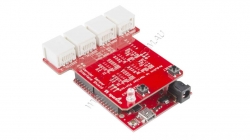


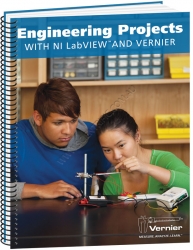

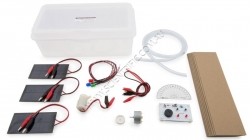



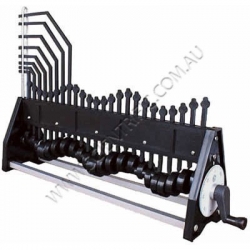

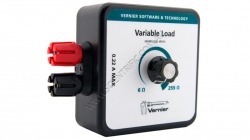
115 low relevance results shown for 'System'. Prev |1|2|3|4|5 | Next | View 100 per page
Showing low relevance matches only. Return to normal search results
Curriculum resources related to 'System'
ACSSU078 Year 5 Earth and Space SciencesEarth Moon Sun - The Earth is part of a system of planets orbiting around a star (the sun) ACSSU150 Year 8 Biological Sciences
Organ Systems - Multi-cellular organisms contain systems of organs that carry out specialised functions that enable them to survive and reproduce ACSSU155 Year 8 Physical Sciences
Energy Forms - Energy appears in different forms, including movement (kinetic energy), heat and potential energy, and energy transformations and transfers cause change within systems ACSSU175 Year 9 Biological Sciences
Organ Systems - Multi-cellular organisms rely on coordinated and interdependent internal systems to respond to changes to their environment ACSSU176 Year 9 Biological Sciences
Ecology - Ecosystems consist of communities of interdependent organisms and abiotic components of the environment; matter and energy flow through these systems ACSSU179 Year 9 Chemical Sciences
Chemical Reactions - Chemical reactions, including combustion and the reactions of acids, are important in both non-living and living systems and involve energy transfer ACSSU188 Year 10 Earth and Space Sciences
Universe - The universe contains features including galaxies, stars and solar systems and the Big Bang theory can be used to explain the origin the universe ACSSU189 Year 10 Earth and Space Sciences
Global Systems - Global systems, including the carbon cycle, rely on interactions involving the biosphere, lithosphere, hydrosphere and atmosphere ACSSU190 Year 10 Physical Sciences
Energy Conservation - Energy conservation in a system can be explained by describing energy transfers and transformations ACSBL019 Year 11 Biodiversity and the interconnectedness of life
Describing biodiversity - Ecosystems are diverse, composed of varied habitats and can be described in terms of their component species, species interactions and the abiotic factors that make up the environment ACSBL029 Year 11 Biodiversity and the interconnectedness of life
Ecosystem dynamics - Models of ecosystem interactions (for example, food webs, successional models) can be used to predict the impact of change and are based on interpretation of and extrapolation from sample data (for example, data derived from ecosystem surveying techniques ACSCH061 Year 11 Molecular interactions and reactions
Aqueous solutions and acidity - Water is a key substance in a range of chemical systems because of its unique properties, including its boiling point, density in solid and liquid phases, surface tension, and ability to act as a solvent ACSCH091 Year 12 Equilibrium acids and redox reactions
Chemical equilibrium systems - Over time, physical changes and reversible chemical reactions reach a state of dynamic equilibrium in a closed system, with the relative concentrations of products and reactants defining the position of equilibrium ACSCH096 Year 12 Equilibrium acids and redox reactions
Chemical equilibrium systems - Equilibrium position can be predicted qualitatively using equilibrium constants ACSCH097 Year 12 Equilibrium acids and redox reactions
Chemical equilibrium systems - Acids are substances that can act as proton (hydrogen ion) donors and can be classified as monoprotic or polyprotic depending on the number of protons donated by each molecule of the acid ACSCH098 Year 12 Equilibrium acids and redox reactions
Chemical equilibrium systems - The strength of acids is explained by the degree of ionisation at equilibrium in aqueous solution, which can be represented with chemical equations and equilibrium constants (Ka) ACSCH099 Year 12 Equilibrium acids and redox reactions
Chemical equilibrium systems - The relationship between acids and bases in equilibrium systems can be explained using the Brønsted Lowry model and represented using chemical equations that illustrate the transfer of hydrogen ions ACSCH100 Year 12 Equilibrium acids and redox reactions
Chemical equilibrium systems - The pH scale is a logarithmic scale and the pH of a solution can be calculated from the concentration of hydrogen ions; Kw can be used to calculate the concentration of hydrogen ions from the concentration of hydroxide ions in a solution ACSCH101 Year 12 Equilibrium acids and redox reactions
Chemical equilibrium systems - Acidbase indicators are weak acids or bases where the acidic form is of a different colour to the basic form ACSCH102 Year 12 Equilibrium acids and redox reactions
Chemical equilibrium systems - Volumetric analysis methods involving acidbase reactions rely on the identification of an equivalence point by measuring the associated change in pH, using chemical indicators or pH meters, to reveal an observable end point ACSPH016 Year 11 Thermal nuclear and electrical physics
Heating processes - Heat transfer occurs between and within systems by conduction, convection and/or radiation ACSPH022 Year 11 Thermal nuclear and electrical physics
Heating processes - Two systems in contact transfer energy between particles so that eventually the systems reach the same temperature; that is, they are in thermal equilibrium ACSPH064 Year 11 Linear Motion and Waves
Linear motion and force - Momentum is a property of moving objects; it is conserved in a closed system and may be transferred from one object to another when a force acts over a time interval ACSPH065 Year 11 Linear Motion and Waves
Linear motion and force - Energy is conserved in isolated systems and is transferred from one object to another when a force is applied over a distance; this causes work to be done and changes to kinetic and/or potential energy of objects ACSPH073 Year 11 Linear Motion and Waves
Waves - A mechanical system resonates when it is driven at one of its natural frequencies of oscillation; energy is transferred efficiently into systems under these conditions ACSBL052 Year 11 Biodiversity and the interconnectedness of life
Ecosystem dynamics - Photosynthesis is a biochemical process that in plant cells occurs in the chloroplast and that uses light energy to organic compounds; the overall process can be represented as a balanced chemical equation ACSBL053 Year 11 Biodiversity and the interconnectedness of life
Ecosystem dynamics - Cellular respiration is a biochemical process that occurs in different locations in the cytosol and mitochondria and metabolises organic compounds, aerobically or anaerobically, to release useable energy in the form of ATP; the overall process can be repr ACSPH021 Year 11 Thermal nuclear and electrical physics
Heating processes - Change of state involves internal energy changes to form or break bonds between atoms or molecules; latent heat is the energy required to be added to or removed from a system to change the state of the system
Products related to 'System'

Vernier Amusement Park Physics - Experiment Manual
Amusement Park Physics is an excellent resource for teachers who want their students to connect their experiences at an amusement park to the physics concepts studied in class. A key portion of the book discusses taking your class to the amusement park and includes sample lab she...
Order code: AMPK

Vernier Arduino Interface Shield
VERNIER ARDUINO INTERFACE SHIELD
The Vernier Arduino Interface Shield provides a convenient way to make connections from Arduino® microcontrollers to Vernier sensors. The Vernier Arduino Interface Shield plugs directly on top of the Arduino® and adds two BTA (analog) and...
Order code: BT-ARD
IEC Circuits Kit Complete ASEP
IEC CIRCUITS KIT COMPLETE CARD OF WIRES
This is a small but useful low cost kit for creating basic circuits using batteries, globes and different types of wire. The concept of heat generation, energy transformation and the operation of fuses in electrical circuits can be...
Order code: EM0970-001

Vernier Engineering Projects with LEGO MINDSTORMS Education EV3 - Electronic Version
VERNIER ENGINEERING PROJECTS WITH LEGO MINDSTORMS EDUCATION EV3 - ELECTRONIC
This book presents 13 engineering challenges to build and program robots using the LEGO® MINDSTORMS® Education EV3 Core Set, LEGO® MINDSTORMS® Education EV3 Software and Vernier sensors. It is pe...
Order code: EP-EV3-E
$P.O.A. Each

Vernier Engineering Projects with Lego NXT
Free e-Book Download. Last 2 hard copies available.
VERNIER ENGINEERING PROJECTS WITH LEGO® MINDSTORMS® EDUCATION NXT
A discontinued book that is still available as a free download here: http://www2.vernier.com/free/vernier-engineering-projects-with-lego-mindstorms-nxt.zip
This book presents 12 engineering challenges t...
Order code: EP-NXT

Vernier Engineering Projects with NI LabVIEW and Vernier
Only 4 books remaining
ENGINEERING PROJECTS WITH NI LABVIEW AND VERNIER
This lab book contains engaging hands-on projects for SensorDAQ, LabQuest LabQuest2 or LabQuest Mini. It introduces engineering concepts and programming with NI LabVIEW development software. An introductory knowledge of NI ...
Order code: EPV

Vernier Engineering Projects with NI LabVIEW and Vernier - Electronic Version
ENGINEERING PROJECTS WITH NI LABVIEW AND VERNIER - ELECTRONIC
This digital lab book contains engaging hands-on projects for SensorDAQ, LabQuest LabQuest2 or LabQuest Mini. It introduces engineering concepts and programming with NI LabVIEW development software. An introduc...
Order code: EPV-E
Key Experiment Water Quality Testing
KEBS2: This investigation utilises data collection equipment for basic water quality monitoring and analysis. The data can then be used to investigate environmental variables.
Curriculum Topics
Biology: Describing biodiversity and Ecosystem dynamics
Descri...
Order code: KEBS2

KidWind Solar Energy Exploration Kit
KIDWIND SOLAR ENERGY EXPLORATION KIT
Explore solar energy with this innovative science kit designed to help students investigate energy transformations. A hinged box helps students discover how the angle of photovoltaic panels relative to the sun affects power output. Com...
Order code: KW-SEEK

Vernier LabQuest Viewer Software Electronic Version
VERNIER LABQUEST VIEWER ELECTRONIC EDITION:
LabQuest Viewer is available as a download. Purchase this downloadable version and we will send you a link after we have processed your order.
LabQuest Viewer software allows you to view and control the LabQuest wirelessly fr...
Order code: LQ-VIEW-E

Vernier Motion Encoder Receiver
VERNIER MOTION ENCODER RECEIVER
The Motion Encoder Receiver is the sensor part of the Vernier Motion Encoder System. It attaches to the end of a dynamics track and connects to a Vernier interface.
NOTE: This product is the Receiver only. The receiver must be use...
Order code: MEC-BTD

IEC Inertial Balance Kit PSSC
IEC INERTIAL BALANCE KIT
The IEC Inertial Balance Kit is a simple demonstration of the principle of determining the mass of an object from the frequency at which it vibrates in a system. In addition it clarifies the difference between mass and weight.
Gravity pulling eve...
Order code: MF1964-001

IEC Wave Motion Apparatus Powell Pattern Rotating
IEC WAVE MOTION APPARATUS - POWELL'S PATTERN
The IEC version of 'Powell's Wave Motion Apparatus' demonstrates the form and propagation of both longitudinal and transverse waves. A series of vertical rods with plastic tips are raised and lowered by cams on a shaft which is...
Order code: SW4250-001

Vernier Energy Sensor
VERNIER ENERGY SENSOR
The Vernier Energy Sensor offers an easy way to quantify voltage, current, power and energy output of small wind turbines and solar panels such as those used in our KidWind Experiment Kits.
Setting up a circuit to study renewable energy systems su...
Order code: VES-BTA

Vernier Variable Load
VERNIER VARIABLE LOAD
The Vernier Variable Load is designed to be used in conjunction with the Vernier Energy Sensor to provide a range of resistive loads for projects such as wind turbines or solar panels. The Vernier Variable Load provides an easy way to adjust the resi...
Order code: VES-VL
115 low relevance results shown for 'System'. Prev |1|2|3|4|5 | Next | View 100 per page



 ,
,